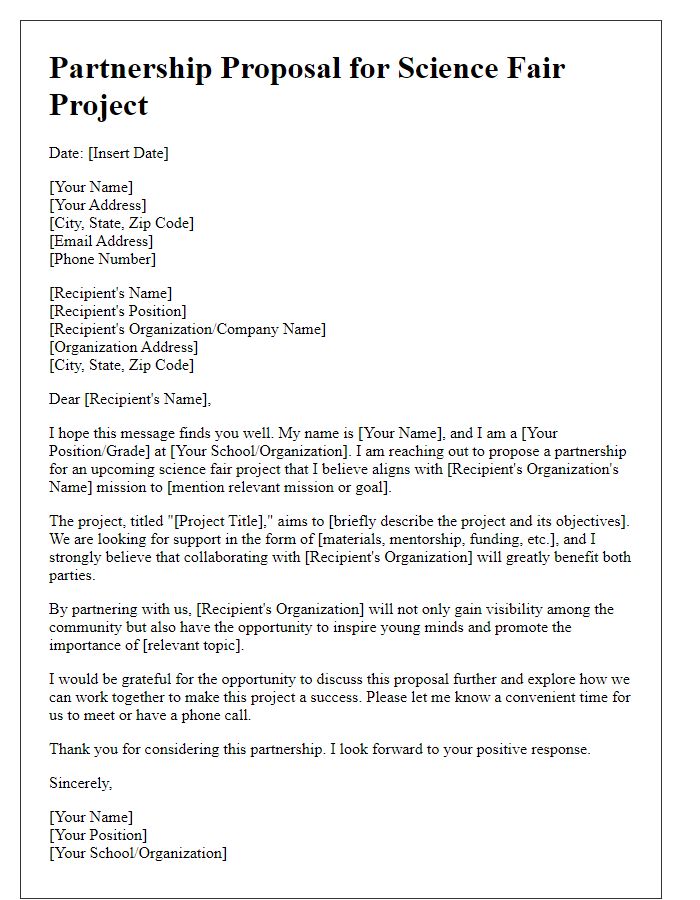Are you ready to embark on an exciting adventure to support young scientists? A science fair project fundraising initiative can provide the necessary resources for students to explore their creativity and innovation. By contributing to this cause, you're not just funding a project; you're investing in the next generation of thinkers and problem solvers. Join us as we dive deeper into how you can make a difference in their educational journey!

Clear Project Description
A science fair project on renewable energy sources, particularly focusing on solar panels, can educate students on sustainable practices. The project aims to build a small-scale solar power generator that demonstrates how sunlight can be converted into electricity using photovoltaic cells. Students will calculate energy output under different conditions, such as varying sunlight exposure and panel angles, to understand efficiency rates. The project location, a middle school in Austin, Texas, will serve as an ideal setting, providing ample sunlight and a community eager to learn about eco-friendly technologies. Fundraising targets a budget of $500, covering materials like solar cells, batteries, and wiring. This initiative encourages tomorrow's innovators to explore science and environmental stewardship.
Target Audience Analysis
Target audience analysis is essential in crafting an effective fundraising strategy for a science fair project. Identify the demographic segments such as local businesses, educational institutions, and community organizations that may have an interest in supporting innovative youth initiatives. For instance, small businesses in the area, such as cafes or bookstores, often seek opportunities for community engagement, potentially offering sponsorship or donations. Educational institutions, including public schools and universities, may value projects that promote STEM education. Awareness of age demographics, income levels, and community involvement can tailor messaging specifically addressing each group's potential interests and motivations. Quantifying support goals, such as specific dollar amounts needed to cover materials and equipment costs, can help articulate the project's value proposition effectively. Engaging storytelling about the project's impact, such as fostering critical thinking or potential community outcomes, can resonate deeply with targeted audiences, enhancing the chances of successful fundraising initiatives.
Impact and Benefits Highlight
Engaging with local communities through science fairs, such as the annual Bright Minds Science Fair held in Springfield, can inspire students to pursue STEM (Science, Technology, Engineering, Mathematics) fields. Fundraising efforts of approximately $5,000 are essential to support essential resources like lab equipment, educational materials, and venue arrangements. These funds will enhance experiential learning opportunities, allowing participants to develop critical thinking and problem-solving skills. Moreover, increased participation from diverse demographics promises to foster inclusivity and collaboration among students, paving the way for future innovation and scientific discovery. Investing in this initiative can lead to long-term benefits, including increased interest in scientific careers and higher achievement in related subjects.
Budget Breakdown
For a successful science fair project titled "Advancements in Renewable Energy," a detailed budget breakdown ensures clarity for potential donors. Required materials include solar panels ($150), wind turbine kits ($120), and various electronic components such as microcontrollers ($40) and sensors ($30) totaling $440. Additional supplies, including batteries ($30), wiring ($20), and safety equipment like goggles ($15), bring the subtotal to $635. Incorporating presentation materials like poster boards ($25) and printing ($20) for project documentation adds another $45. Ultimately, the complete budget, estimating $680, emphasizes the financial investment needed to effectively showcase innovations in green technology and foster educational growth in sustainable practices.
Call to Action and Contact Information
For a successful science fair project fundraising campaign, it's essential to create an appealing and compelling message. Clear communication of your project's significance, goals, and financial needs can inspire support. Utilize engaging visuals of your project, and be specific about the amount needed and how funds will be used. Highlight potential benefits for the community or educational impact. Provide contact information, including email and social media accounts, to encourage further inquiries and discussions. A direct call to action can motivate potential donors to contribute immediately, fostering a sense of involvement in your project's success.
Letter Template For Science Fair Project Fundraising Samples
Letter template of sponsorship inquiry for science fair project materials

Letter template of partnership proposal for science fair project support

Letter template of fundraising campaign for science fair project resources

Letter template of community outreach for science fair project contributions

Letter template of fundraising event invitation for science fair project

Letter template of business sponsorship request for science fair project








Comments